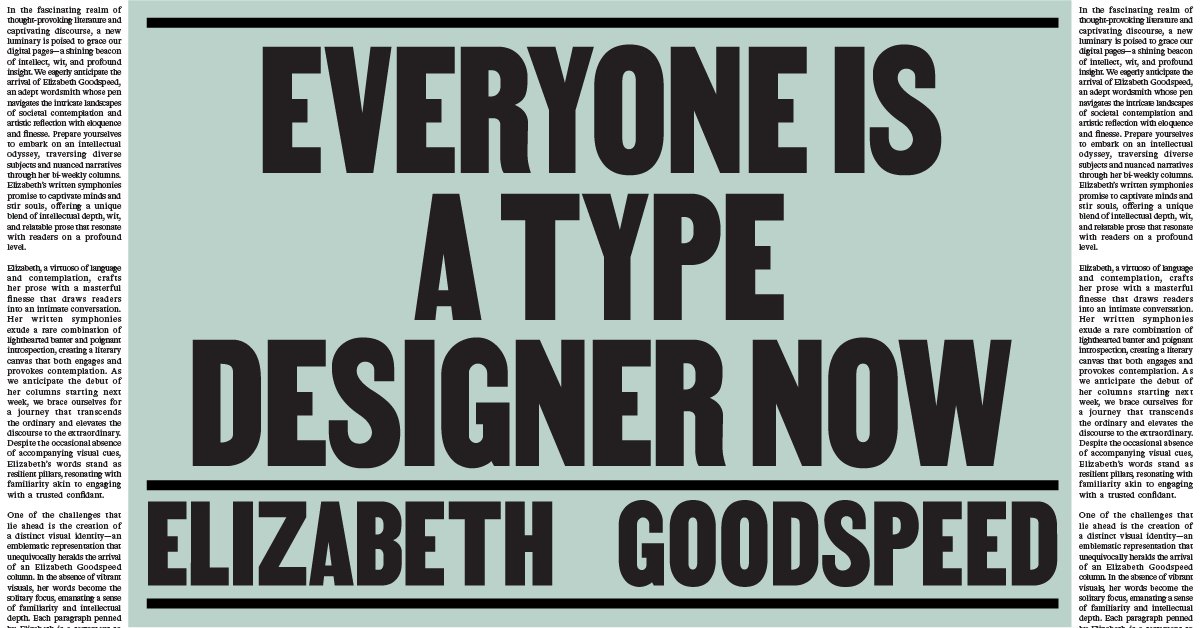The origin of custom type is often creative rather than technical – a need for letterforms that echo a brand’s physical environment, emotional tone, or specific ethos. Brooklyn design studio R&M’s work for Banker’s Anchor, a public plaza in Greenpoint, exemplifies how helpful tailored type can be as connective tissue between form and idea. For the project, the studio developed Triad, a typeface whose triangular counterforms and crossed contours referenced the plaza’s real world triangular footprint – a peculiar geometry no pre-existing typeface could have contained. Co-founder Ryan Bugden says that “custom type as a differentiator for our clients is essentially a given – it usually becomes the glue that binds the whole identity together.” At other studios, emotional resonance is just as important as technical specificity. &Walsh’s Type of Feeling, the studio’s new retail type foundry, was founded with the goal of creating fonts that “evoke a specific emotional response”. In a chaotic visual landscape, brands have milliseconds to signal tone. As a primary container for meaning, typography inevitably carries an enormous share of that emotional load.
The economic logic is equally persuasive. Over the past decade, companies like Monotype have pushed subscription-based licensing, which ties font fees to shifting metrics like web traffic or app use. This takes the pay-for-play model once reserved for web fonts and applies it to desktop use – the license needed for logos and other core brand assets, and one traditionally covered by a single, one-time fee. With these systems, brands no longer own their fonts outright; instead, they pay indefinitely for continued access. Monotype’s Standard plan, for instance, costs $20,500 per year for five users. It includes access to five commercial fonts (though any variable font counts as five) and caps usage at 20 million page views and 10 million digital ad impressions. The cheaper plan, $2,500 per year, offers three typefaces and limits monthly page views to 1.5 million. By comparison, a one-time commercial license from an independent foundry like Dinamo – say, a single cut of Marfa for a company of 5,000 employees – includes desktop, app, web, social media, video, and logo use, plus third-party sharing rights, for roughly $10,500. A steep price, but once it’s paid, it’s done.
Dylan Young, senior type designer at Koto, recalls “some really troubling stories around subscription licenses recently having a huge effect on small businesses who don’t have the income to shell out thousands of dollars for license fees”. With licensing growing more expensive and labyrinthine, commissioning a custom typeface offers stability and, as Jessica Walsh of Type of Feeling notes, “full exclusivity for a fraction of the cost”. Meanwhile, more affordable software like Glyphs (€299 in 2025 compared to the €450 I paid for Robofont in 2017) has made creating custom type infinitely more accessible. Many studios can now prototype fonts in-house, and are able to bake the costs of type development into branding work from the start. What once demanded an outside expert (and a separate budget line) has become something more studios can handle themselves.

